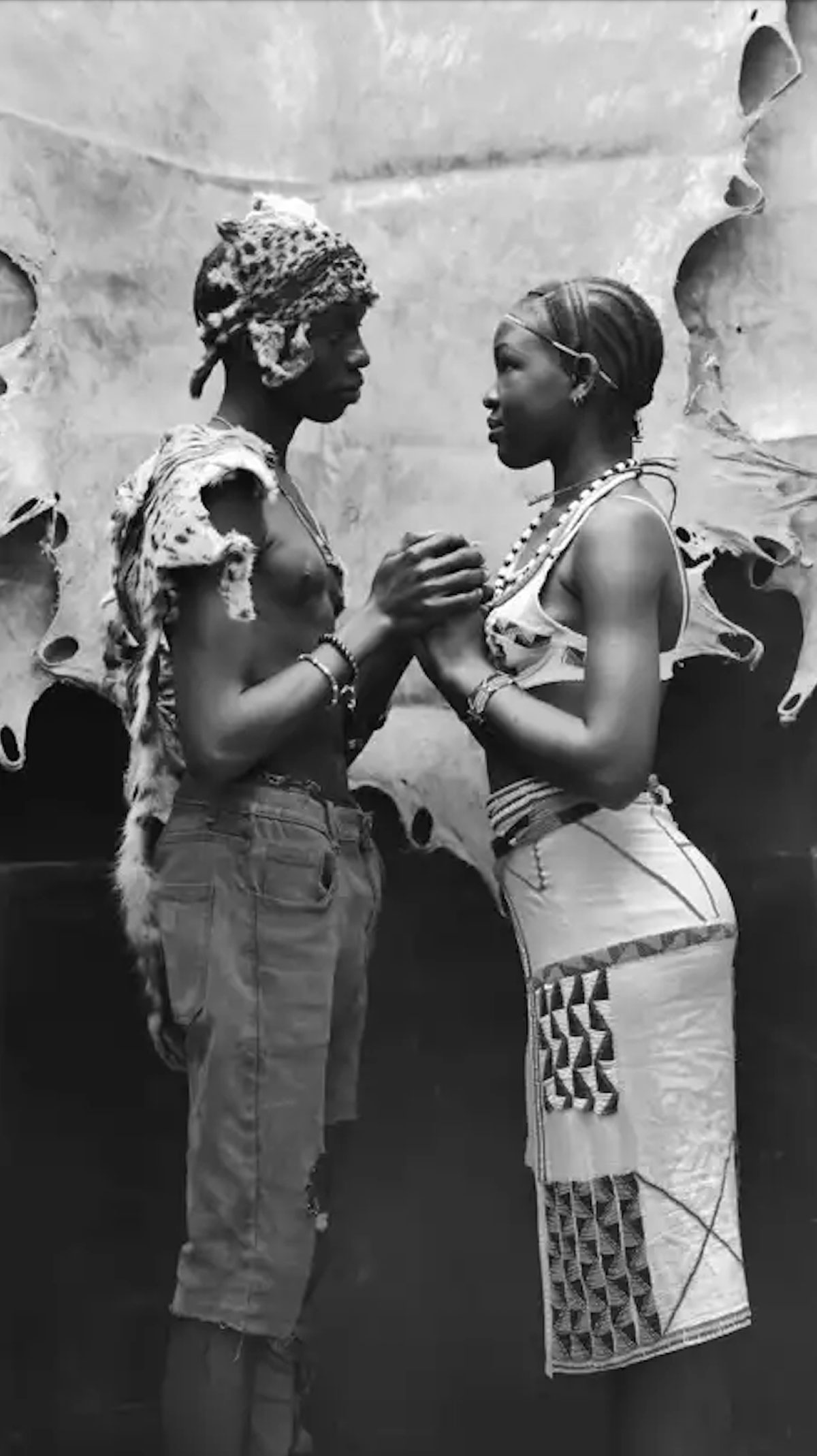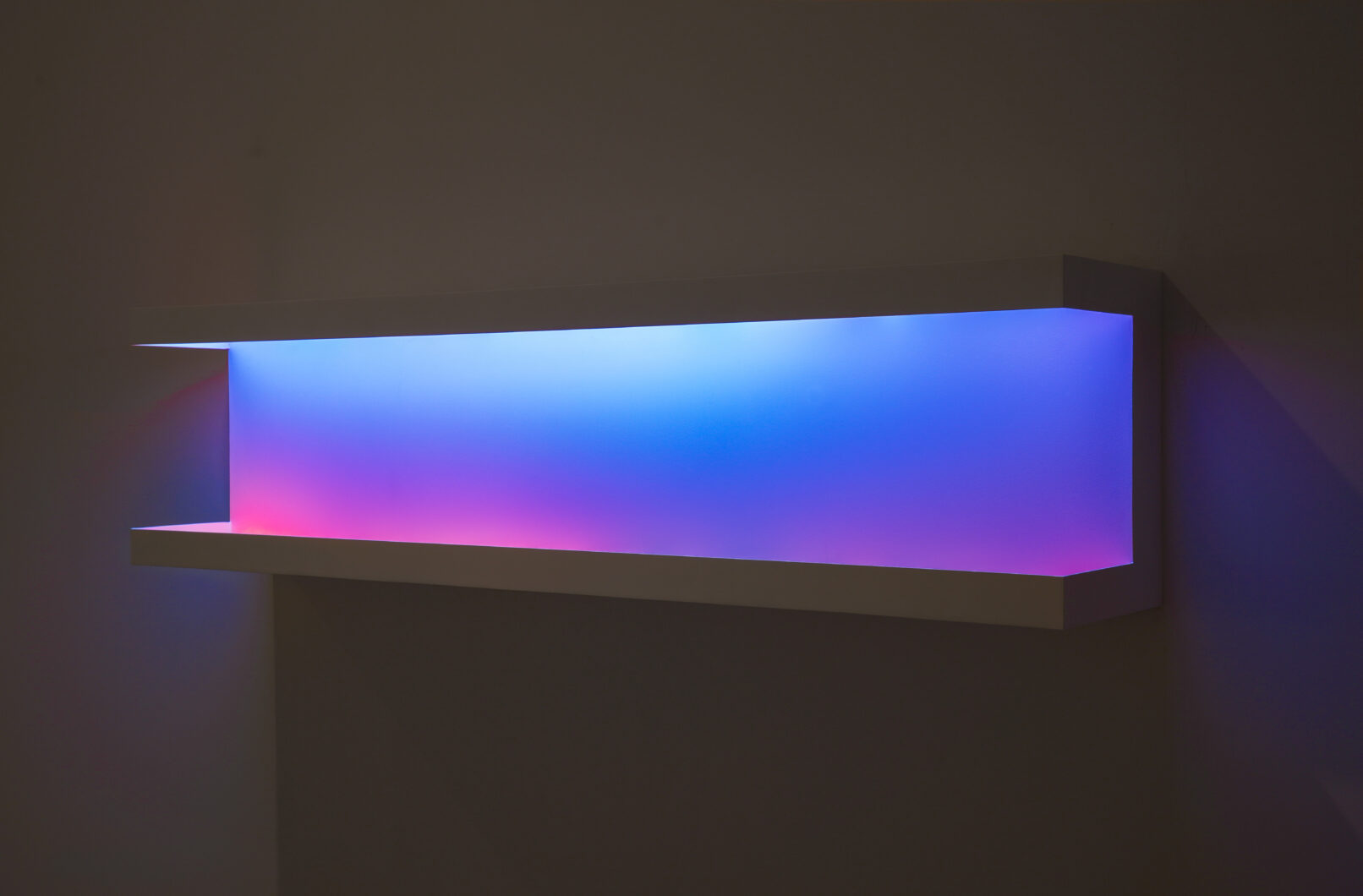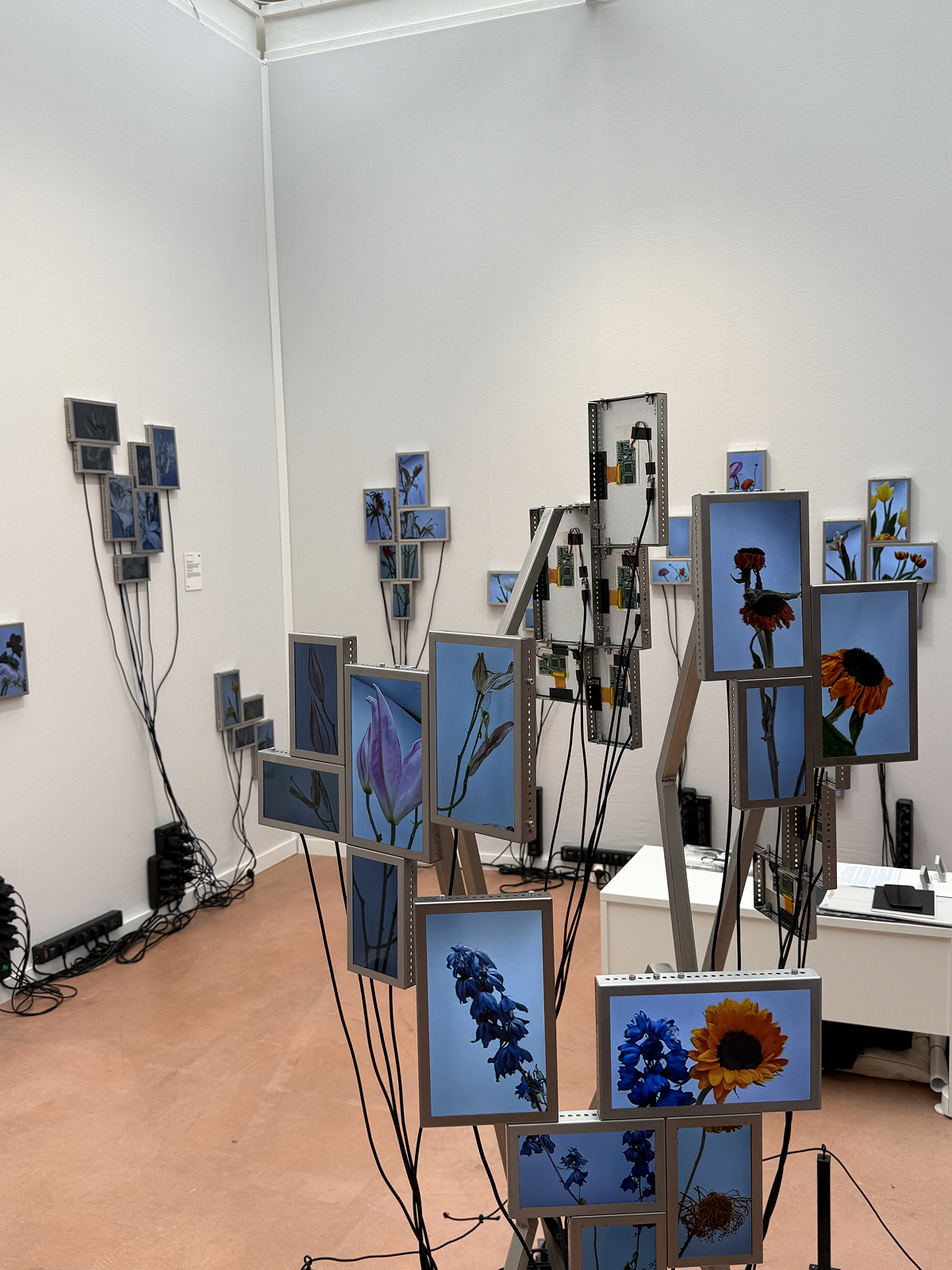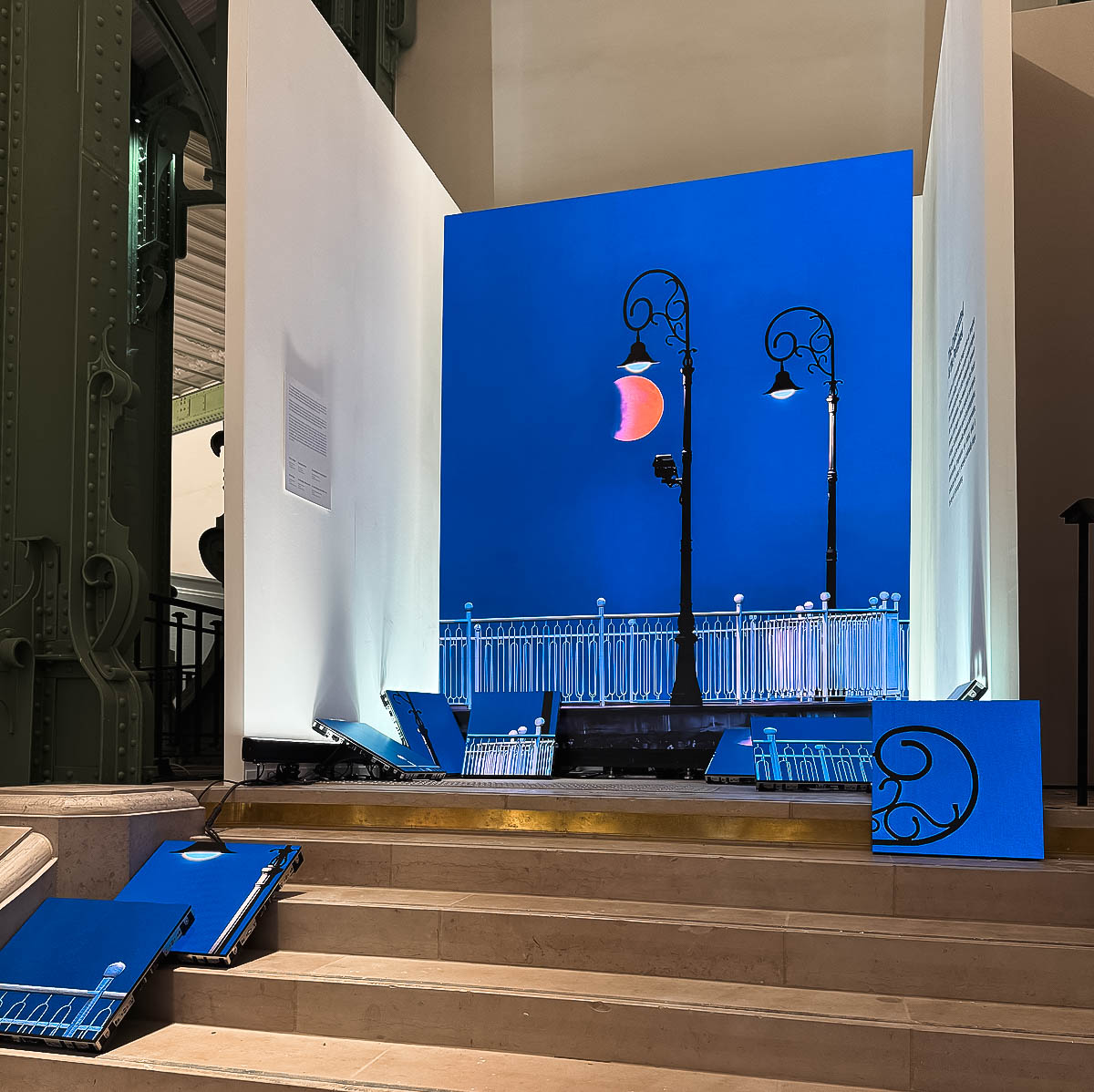Paris Photo had a dedicated digital art section for the third year in a row. Curated by the incredible Nina Roehrs, it brought together 13 galleries, projects, and platforms.
Unlike my Art Basel Paris article (available here) where digital art was almost hidden and required detective work to find, at Paris Photo the works were right in front of me. So this time, I focused on the pieces I genuinely enjoyed and grouped them into loose categories, making it easier for both me writing, and you reading, to catch the key trends.

Artverse Gallery, curated by the brilliant Grida and powered by Tezos platform objkt, featured niceaunties, who works with AI and Asian aunties as her main characters. This time, she found a vintage mirror at a Paris flea market and customised the frame with a 3D-printed cat sitting on top. Inside the mirror, an auntie appears to shame you. A nod to the Asian (and honestly, global) culture that niceaunties loves to play with. Been there, can relate.

Automata presented Solienne, the first AI agent artist trained by Kristi Coronado on her entire 46-year life archive, and the first AI agent to exhibit at Paris Photo. I spoke with George Bach and Ameesia Marold, who walked me through the three parts of the booth. I’m still holding an A4 print of “Manifesto #46: How to Recognize Authentic AI,” which reads: “The difference is energetic: corporate AI drains creative energy. Authentic AI multiplies creative capacity.” It's a very interesting (and much-needed) conversation.

Yatreda, presented by Nguyen Wahed, showed real photographs of Ethiopian life and self-portraits, not AI-generated. I stared at them for a long while before asking the gallerist, Mimi, “Are these AI?” She told me many visitors asked the same question. Everything was shot with a motion camera. It made me reflect on how normalized AI has become: the moment something looks visually rich, unfamiliar, or deeply cultural, we assume it’s AI, when sometimes, it’s just good art.

Louis-Paul Caron, represented by Danae, also integrates AI into his practice. On my way home from the fair, I saw his work featured in Process Journal, and the next day, I got to speak with him. His series explores how still we remain in the middle of natural disasters. I also had a lovely chat with Margot Derisbourg from Danae, who told me more about Louis' background.

Anita Beckers Gallery showcased Daniel Canogar, whose Diorama series reacts to real-time climate data, including natural disasters and meteorological events. I’m always drawn to data-driven art. It’s visually striking and conceptually tight. Diorama 2 pulls real-time information from the Global Disaster Alert and Coordination System (GDACS).


At Tomas Redrado Art, Julieta Tarraubella presented a solo show exploring the intersection of nature and technology. Flowers appear on small wired screens arranged in formations that reminded me of bouquets, a literal “cyborg garden.”
Cole Sternberg, in collaboration with Giga, presented a project linking digital artworks to real schools from Giga’s global connectivity map. Each piece evolves in real time as a school’s internet access improves, built from a custom algorithm and vintage botanical archives. Giga, a UNICEF–ITU initiative, has mapped over 2.2 million schools and improved connectivity for 24,000+, benefiting around 11 million students.

XMAGE by Huawei showcased the best photographs taken on their phones and submitted by users. What stood out to me is that just like Solomon/Samsung at Art Basel Paris and LG at Frieze London, Huawei brought a beautifully executed presentation. Great setup, great screens, great visual experience.

I’m not biased, but this was my favourite piece of the entire fair. Heft presented Luke Shannon's 'Friday, August 22, 2025 at 5:11 PM (Fingers Crossed)'. His work uses a body scanner that collectors lie on (with any objects they want) to generate their image. Luke guides them through the experience, and a curtain can be pulled around the scanner for privacy. I watched several outputs and they were all wildly different, fascinating, and honestly stunning.
“Wanderer” by Office Impart and Jan Robert Leegte was another highlight: a digital traveler, an online entity that continuously picks a direction and moves. Each step is recorded on the blockchain and visualised on a live map.
Conceptually, Paris Photo showed how quickly the public is adapting to the digital age. The fact that visitors immediately assumed Yatreda’s photographs were AI-generated says a lot about how normal generative algorithms have become in our visual vocabulary.
Another major trend was AI not just as a tool, but as an ongoing dialogue. Automata’s booth embodied this, and honestly, so do I. I’m literally using AI to polish the grammar and structure of this article.
There were also works that pulled people in through pure curiosity, like Luke Shannon’s interactive body scanner. I’m sure many visitors stopped just to figure out what it was and why it existed, and that’s the beauty of interactive digital art.
Nature and the environment formed another clear theme. It’s one of the oldest subjects in art history, so it makes total sense that tech-powered art would reinterpret it rather than abandon it.
And finally: I felt genuinely welcomed at every booth I visited. Artists and gallerists were open, kind, and eager to explain their work, which, trust me, is not always the case in the art world. It made the whole experience even better.